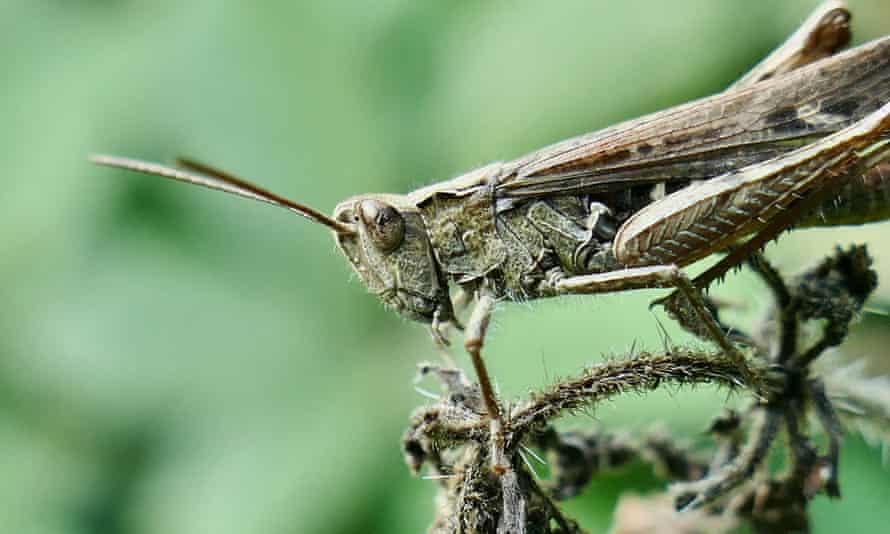Country diary: let the grasshoppers grow
Sandy, Bedfordshire: The lawn hasn’t been mowed since the first greenish-brown babies appeared in early June, and the inhabitants are chirruping their approval

All summer long, passersby have halted at the top of our garden to read a sign pinned to the gatepost, then they smile or even giggle. I hope that I might have saved them unnecessary work.
Germany has a name for the “classic” lawn: it is the englischer Rasen, a close-mown, single species turf. Our social media gatepost offers an alternative – a Jiminy Cricket-like cartoon insect declares that ours is a grasshopper nature reserve and that we are letting the grass grow until the end of the season.
This one man has not been to mow a meadow since the first greenish-brown babies started leaping up from between the daisies in early June. On still, sunny days, the inhabitants seem to chirrup their approval.
They have brought me to my knees once again. As a child, I envied the big boys who could catch grasshoppers and keep them in matchboxes, but as an adult I have learned a kinder technique for unobtrusive observation. If I whip my glasses off, bend over and nudge my nose between the blades without making any sudden movements, leaning ever closer, I can get within 10 centimetres, and short-sightedness brings close-focusing dividends. A field grasshopper grasps the stem with forelimbs crooked, as if playing an oboe. I cannot make out the individual segments of its stubby antennae, but I can see those eyes very clearly, raised discs with pin-black pupils and rheumy irises, as if it has cataracts. They are patterned like the skin of an old frog.
I am surprised by the thick, fine, mammal-like fur sprouting from its underside, not at all like the evenly spaced, bristly hair elsewhere. Its flattened wings are as veined and taut as the back of an elderly person’s hand. Those milky coffee-coloured back legs, cocked to spring, swell in graceful curves from ankle to muscled calf. Time to draw back and leave it to stridulate.
My domestic “leave it long” efforts are gaining traction elsewhere, and sometimes in surprising places. Among the formal symmetry of English Heritage’s Wrest Park, its walled garden had been transformed in late July into a wildflower meadow. Let it grow!